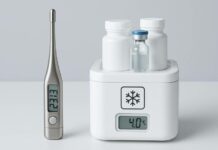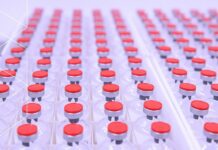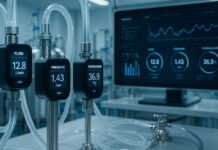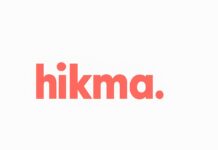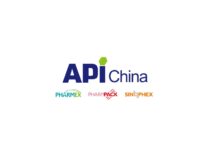Antibody drug conjugates (ADCs) are the main players in the fields of cancer clinical research and deal-making, with new alliances and contracts appearing on a regular basis. Businesses set themselves apart as the ADC market grows increasingly saturated by concentrating on novel targets and linkers.
ADCs have been at the forefront of high-value pharmaceutical acquisitions since 2023, and businesses like MSD and Daiichi Sankyo have invested billions to grow their ADC pipelines. Big players like AstraZeneca and Bristol Myers Squibb are making investments, but smaller biotechs are also seeing possibilities as innovation takes hold.
This year’s Annual American Society of Clinical Oncology (ASCO) conference, which took place from May 31 to June 4, showcased a lot of innovation. Data from popular ADCs like as Pfizer’s Adcetris (brentuximab vedotin), Gilead Sciences’ Trodelvy (sacituzumab govitecan-hziy), and Daiichi Sankyo/AstraZeneca’s Enhertu (trastuzumab deruxtecan) were shown at the 2024 conference.
It is difficult to predict [which medications will be effective] since there are so many new targets and promising Phase III outcomes, according to David Thurston, PhD, a professor of drug development at King’s College London in London, UK.
Phase II and III trials are now underway for 53 ADCs, while the US Food and Drug Administration (FDA) has authorized 12 ADCs for different forms of cancer, according to GlobalData.
ADC treatments generally include the covalent bonding of a cytotoxic agent with a monoclonal antibody via a chemical linker. These treatments have traditionally been researched mostly for various malignancies, but more lately, they have been examined for other therapeutic areas as well.
According to Dr. David Segarnick, CMO of Medistrava, a medical solutions firm, ADCs have improved the payload that can be delivered to target areas and boosted the capacity to solubilize pharmaceuticals.
The increase in ADCs
Pfizer was the first pharmaceutical firm to get FDA approval for an ADC in 2000. However, the treatment, Mylotarg (gemtuzumab ozogamicin), was taken off the market by the FDA in 2010 as a result of further safety concerns being raised and confirmatory studies failing to demonstrate the treatment’s therapeutic efficacy. In 2017, the FDA reapproved the treatment after a modification to the drug’s dosage schedule.
According to Thurston, since the creation of Mylotarg, researchers have made significant advancements in ADC technology by refining the drug-antibody ratios (DARs) of novel ADC treatments. The number of drug molecules affixed to an antibody in an ADC is indicated by DARs. You would see that scientists have progressed from creating treatments that deliver one medication payload molecule for every antibody molecule to creating therapies that carry eight drug payload molecules.
More ADCs, which allow for single or dual targeting tactics, are being developed by the Swiss biotech company AC Immune. The CEO of AC Immune, Andrea Pfeifer, tells Pharmaceutical Technology via email that the company’s morADC platform may combine compounds that are independently intended to target and disrupt abnormal versions of proteins like Abeta, Tau, or a-syn for applications involving the central nervous system (CNS).
Segarnick believes that the agreement between Daiichi and AstraZeneca for Enhertu was the most significant step that spurred the development of so many agents. AstraZeneca acquired certain rights to Daiichi’s ADC in 2019 for $6.9 billion, and the drug shortly after gained FDA clearance in 2020. A DNA topoisomerase inhibitor payload is attached to a monoclonal antibody that targets Her2. This is how Enhertu works. Because of its great effectiveness in breast cancer types with both high and low Her2 expression, Segarnick noted that its introduction was revolutionary.
Segarnick claims that compared to the previous generation of ADCs, Enhertu had a conjugate that was far more stable and repeatable. It seems sense that the treatment had a more stable connection, which lessened the therapy’s toxicity.
One of the larger acquisitions that propelled the industry to its peak in 2019—when the aggregate value of ADC-related transactions exceeded $1.6 billion—was the AstraZeneca-Daiichi agreement. According to Thurston, during this period, a number of ADCs were approved by the FDA. Two examples of these were Astellas Pharma/Seagen’s urothelial cancer treatment Padcev (enfortumab vedotin) and Roche’s lymphoma ADC Polivy (polatuzumab vedotin-piiq).
Of the twelve ADCs on the market now, five were authorized by the FDA between 2017 and 2019.
According to Thurston, this was also the greatest era for investors to pour money into small and mid-sized biotechs to help them develop their ADC assets. The pandemic caused a decline in ADC dealmaking, but according to Segarnick, the following increase in 2023 indicates a market rebound and increased interest in the industry. Padcev’s co-developer, Seagen, was purchased by Pfizer in 2023 for $43 billion.
Trop2 receptor-related ADC research is an intriguing field of study, according to Segarnick. According to him, these Trop2 membrane glycoproteins play a crucial role in the cellular signal transduction cascade, which transmits signals for cellular potential, invasion, and survival. A number of businesses are looking into the target for non-small cell lung cancer. For example, Gilead Sciences is looking into the Phase III EVOKE-2 study (NCT05186974) for their popular Trop2-targeting medication Trodelvy.
Segarnick notes that despite recent advancements, problems with the toxicity of certain ADCs still exist. The FDA has cautioned patients about the possibility of interstitial lung disease while using Enhertu and Boehringer Ingelheim/Roche’s Kadcyla in their labels. ADC is eliminated in the liver, which also results in some severe Grade 3 or 4 neutropenia. Segarnick notes that in order to minimize this toxicity, a careful balance in the drug-antibody ratio must be reached. Since you may guess, the industry is keeping a careful eye on these problems since they seem to be becoming worse for patients as the DAR rises.
Getting seen in a busy marketplace
According to Thurston, everyone is searching for a fresh, innovative objective that will set them apart from other businesses and be effective for a certain kind of cancer. You would see that the majority of ADC businesses now employ a small number of targets for cancer.
GO Therapeutics, based in Natick, Massachusetts, is one ADC-focused biotech player in the market. The business has concentrated its efforts on developing innovative methods of cancer targeting. The business has discovered innovative, clean targeting for triple-negative breast cancer, according to Dr. Hans Wandall, CSO of the company. The CEO of GO Therapeutics, Constantine Theodoropulos, states that creating a very pure tumor antigen is one of the biotech company’s top goals in order to set itself apart. In around eighteen months, the business will begin first-in-human clinical trials for two of its ADC medicines. GOL100 and GOR800 are two new glycoprotein epitopes that the business has designed to target novel glycoproteins that are expressed on 30 percent of all breast malignancies and numerous solid tumors, respectively.
According to Thurston, Genentech, a branch of Roche, is exploring ADC technology, which will enable site-specific conjugation, as an alternative strategy. Reactive sites are engineered into an antibody by a process known as site-specific conjugation, which guarantees that the medication binds to the desired position on the antibody. Because of the product’s cleanliness, you may discover that this has benefits for production, says Thurston.
The CEO of Tallac Therapeutics, a firm based in San Francisco, California, Dr. Hong Wan, emphasizes the distinctive strategy her organization uses to reduce toxicity. The biotech is creating ADCs that bind to toll-like receptors and include unique oligonucleotide payloads. According to Wan, the first program for the company’s solid tumor asset, TAC-001, is distinct in that it stimulates immune cells as opposed to eradicating them. The treatment is now being developed in Phase I (NCT05399654) for patients with advanced cancer who have not responded to prior treatments. Wan continues, They’re really excited about the potential for TAC-001 in combination with the standard of care because they have shown clinical benefit in this patient group.
Thurston would argue that when firms create treatments for conditions like arthritis and Alzheimer’s illness, ADCs might potentially disrupt other therapeutic fields. According to Segarnick, the market is still unexplored despite recent innovations. You would find him stating that there is potential for high values due to the significant level of unmet need.



